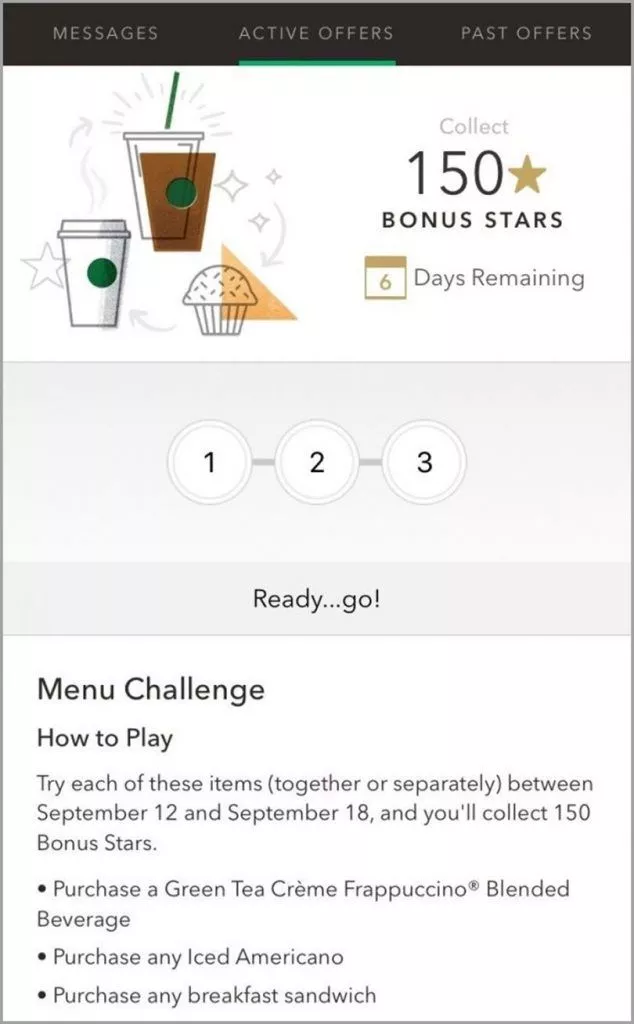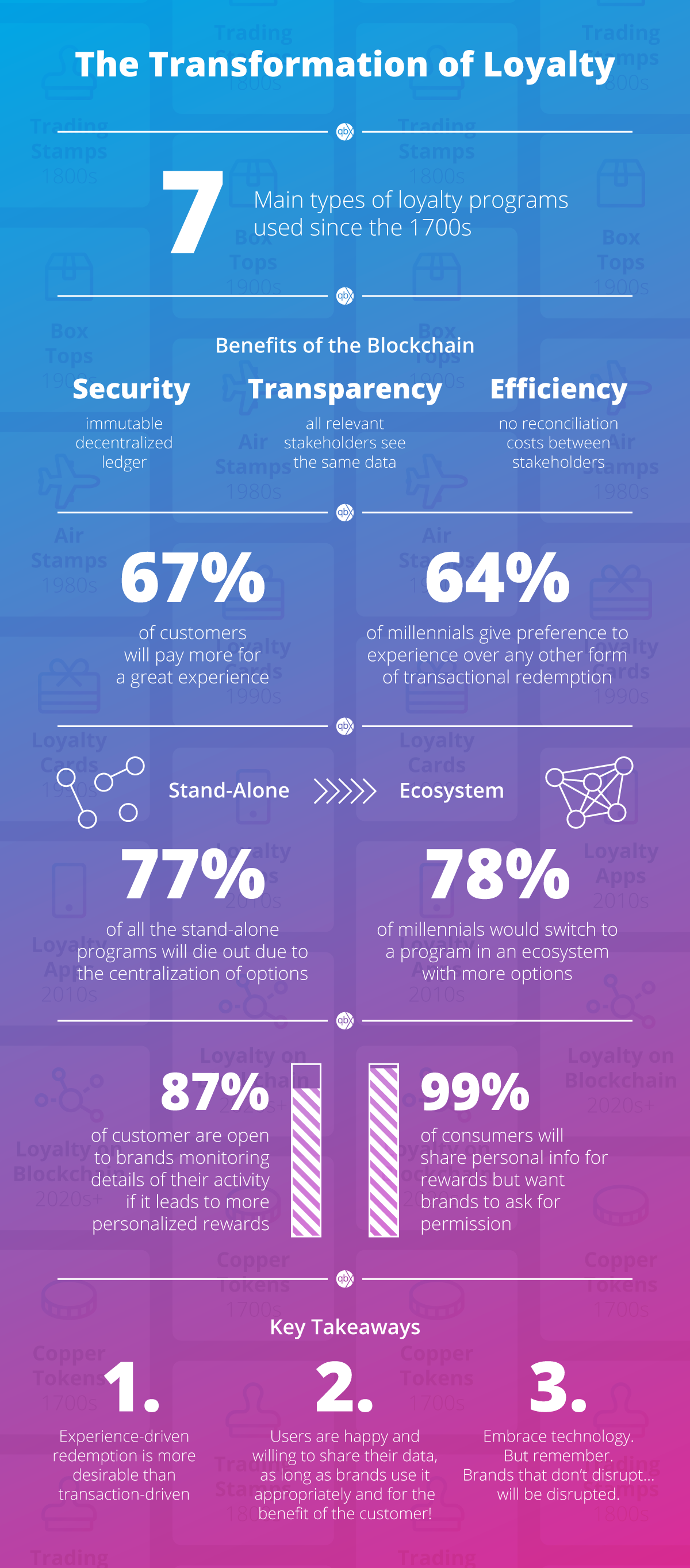Top 5 Trends in the Transformation of Loyalty
“I’ll tell you why I like the cigarette business. It cost a penny to make. Sell it for a dollar. It’s addictive. And there’s a fantastic brand loyalty” – Warren Buffet
Although Warren Buffet’s explanation of why he likes the cigarette business is nothing less than opportunistic, he did state one very important thing, brand loyalty. The concept of loyalty although sometimes not properly understood, can have an immense impact on a brand’s success and its relationship to the customer, especially when referring to recurring revenue as a key metric.
If you are still not convinced that loyalty among customers is valuable, then consider some of the research presented by Frederick Reichheld in his work, “Bain & Company”. Here the researcher suggests that increasing customer retention rates by 5%, leads to 25% to 95% increases in profits.
To more accurately understand how vital loyalty is and will be in the future, we must first better understand the history behind loyalty. When comparing (brand) loyalty from the 18th century and the loyalty of today, it is quickly noticeable that some key aspects are almost exactly the same. For instance, copper coins were being used as a loyalty token that can be redeemed for rewards, similarly to the earn & burn point system we use digitally today. Throughout the history of loyalty, 7 main types of loyalty programs were utilized. Refer to the image below for an overview of the transformation of loyalty over the last 300 years.
From Copper Tokens to Loyalty Tokens
As was previously explained, this concept of brand loyalty and loyalty programs is not necessarily new but rather started in the 1700s. What is even more fascinating is that over the past 300 years we have essentially gone back to the use of loyalty tokens/points but this time in a digital form. Representing the cyclical nature of ideas revolving around loyalty. In our current loyalty landscape, it is predicted that blockchain-based loyalty tokens will be the future of loyalty, especially considering the plethora of benefits that come with it.
- One of which would be the security of the blockchain, to put it briefly, it is due to the decentralized and immutable nature of the ledger on the blockchain.
- Furthermore, the transparency that is achieved through providing all relevant stakeholders the ability to view the same data, is unparallel to any other technological system that was previously implemented for a loyalty program.
- This also leads to another huge benefit of blockchain, which is efficiency. There are no reconciliation costs between stakeholders due to removing the need to include third parties as a means to manage transactions and keep a record.
These three core benefits shape the way for blockchain to take the lead in the loyalty movement.
From Transactional Redemption to Experience-Driven Redemption
Of course, a loyalty program wouldn’t be anything without an awesome collection of redemption options for the consumers but the real point of discussion here is, what do the consumers actually want? Well… when considering the success of frequent flier programs, it is quickly noticeable that perks such as priority access at the airport or even in VIP lounge access, provide the user with more bang-for-his-buck compared to other traditional transactional loyalty programs.
In fact, it was shown that “64% of millennials give preference to experience over any form of transactional redemption.” (Reciproci).
Additionally, about “67% of customers will pay more for a great experience.” (Reciproci).
The data here clearly displays that the traditional cashback and discount rewards we are used to are actually a worse form of reward for any user in general.
Suggesting that the experience-driven form of rewards brings more value to the user as well as over a longer period of time, due to the nature of the reward being much more unique than what an average user would be accustomed to.
From Stand-Alone to Empowering Ecosystem
The rewards and different types of loyalty programs are not the only transformations that loyalty has gone through. Another important transition that marks a step into the future is the change from stand-alone programs to ecosystems of various programs. The idea is that a stand-alone program with a small product portfolio will eventually fail due to a lack of liquidity in their loyalty currency. The solution to this is the shift to ecosystems by connecting with other loyalty programs and increasing the liquidity of the loyalty currency by adding more redemption options.
As presented in The Economist:
“77% of stand-alone programs will die out because of centralization…”
Additionally, the data presented by qiibee would suggest that:
“83% of customers want exchangeable loyalty rewards.”
Essentially, you not only increase the loyalty of your existing customers but also generate new customers within the ecosystem. It’s important to capitalize on these consumer purchasing behaviors and trends that are observed in various industries and across different generations.
The Next Step: Digital Twin and Gamification
When discussing the future of loyalty, specifically the new and innovative rewards that can be generated using state-of-the-art technology, it is important to mention the “Digital Twin”. This next step in the evolution of user rewards is a form of the non-fungible token (NFT) that is linked to a unique product from the brand, i.e. a handbag or a pair of shoes.
Essentially, the digital twin is unique to the customer and will stay with him forever, like a digital fingerprint of the product. These digital twins can be created using blockchain-based NFT tokens, which act as a sort of pre-order token.
What is predicted here is the fact that a digital twin or NFT tokens can be utilized by brands not only to generate cash flow but also to reduce production risk especially in these peculiar times it is important to reduce overproduction and maximize efficiency.
Another amazing development for the future of loyalty is the integration of gamification and leveling systems, which is similar to a progression bar that gamers would see in their videogames. These gamified loyalty processes are nothing new but they certainly are effective, Starbucks shows us how it is done right with gamified loyalty, by allowing their users to collect rewards when completing daily missions. Users can enjoy free coffees, skip the line and pay with the Starbucks Rewards app, but what really drives user engagement is the incentivization of certain behaviors. For instance, a typical challenge would consist of users trying X drink by Y date (as observed below), this allows Starbucks to promote new drinks and enable their fans to widen their choice, whilst also growing their brand engagement and loyalty by giving users more enticing rewards.
To conclude the point on gamification it is important to consider this last data point and study by COLLOQUY, which displayed that “over a quarter of Millennials stay engaged in a rewards program due to gamification mechanisms like badges and competitive elements like leader boards”. These are two factors that are not necessarily synonymous with loyalty but definitely have a positive correlation with it. Users love to be competitive about loyalty and they love to show off their achievements, so reward them!
Data Sourcing
Another point of discussion that is often misconceived or misinterpreted by many, is the concept of data privacy and data sourcing. Based on the many data scandals and privacy breaches we have observed in the past years, it would make sense that users are generally skeptical about opening the doors for brands to access their private data but when taking a better look at the statistics, the numbers actually display another sentiment:
“87% of consumers are open to brands monitoring details of their activity if it leads to more personalized rewards” (Bond)
“99% of consumers will share personal info for rewards, but want brands to ask permission” (Marketing Land)
The data clarifies an important point, which is the fact that users are willing to share their data and are even more incentivized to share data when they are rewarded, meaning that the situation is mutually beneficial for the brand and customer. Of course, the next step in the technological evolution would be the proper implementation of AI technology to make more informed and critical decisions based on the data collected. Antavo presents the first example of this technology, providing brands with an AI that has core loyalty capabilities and can steer the decision-making process for marketers as well as collect mass data from users.
Key Takeaways (TL:DR)
Overall, when looking at the history and trends of loyalty, it’s clear that technology is evolving faster than ever and therefore will play a key role in the transformation of loyalty. Especially when considering how some loyalty features like gamification can have a drastic impact on user engagement and ultimately will increase user satisfaction. Some other key takeaways that were concluded from the topics discussed are detailed below:
-
Blockchain based-loyalty is the future. Ensuring security, transparency, and efficiency.
-
Experience-driven redemption is more desirable than any other form of redemption.
-
Stand-alone programs will die out. Ecosystems supported by technology will nourish.
-
The future is digital, especially considering the innovative rewards that come with these technological advancements.
-
Gamification plays a key role in boosting the user experience and their engagement with the loyalty program.
-
The integration of AI for data collection and insights will become a more common practice in the future to come, especially when discussing the concept of sharing data.
-
Users are happy and willing to share their data, as long as brands use it appropriately and for the benefit of the customer!
In conclusion, we must embrace technology and the path in which it is evolving. Remember… brands that don’t disrupt… will be disrupted.
It is incredible to think that we have evolved so far from the initial form of loyalty, copper tokens, to the contemporary digital form of loyalty, a blockchain-based loyalty token. This full-circle evolution clearly reflects how the core aspects of loyalty have always remained integrated into the earning and redemption process, it is simply the way in which these processes were packaged that changed with the evolution of technology. We must embrace the change into the technological realm and learn to feel comfortable in the digital world.
qiibee: Access world-class brands your customers love.
Most Recent Posts
DAIMANI partnership with Miles & More, powered by qiibee
We’re excited to introduce a new partner of Miles & More powered by qiibee – DAIMANI, the first...
brillen.de Partnership with Miles & More, powered by qiibee
We’re excited to introduce a new partner of Miles & More powered by qiibee – brillen.de,...
Schubiger Möbel Partnership with Miles & More, powered by qiibee
We’re excited to introduce a new partner of Miles & More powered by qiibee – Schubiger Möbel,...





